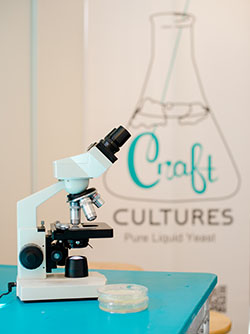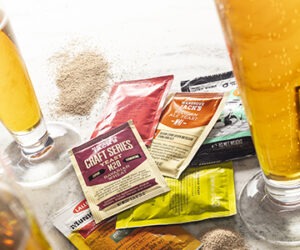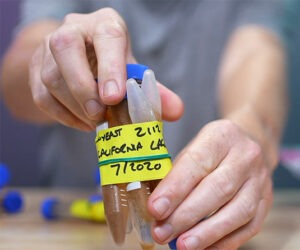A Pure Michigan Beer

Craft beer is produced locally, which is great. But what if we could take “local” a step further and not only produce the beer locally, but source all of the ingredients from within your state’s borders? I live in Michigan, which has rich agriculture and a booming craft beer industry. It was only a matter of time before myself and other brewers in this state were going to be able to brew a beer using 100% Michigan ingredients. Michigan-grown hops and barley have been around for quite some time, and the opening of new malt houses meant we could have regular access to Michigan malt. It wasn’t until fairly recently, however, that brewers had commercial access to indigenous Michigan yeast strains.

A variety of ale and lager strains have been captured, isolated, and tested, with a range of characteristics. Some are clean, some produce peppery phenols reminiscent of saison, and some have a Trappist quality to them in their esters and alcohol tolerances, yet all are unique and unlike any other commercially available strains. One of my favorite strains is a lager yeast called the U.P. Lager™ yeast that was captured on the shores of Lake Superior in Michigan’s Upper Peninsula. It produces a beer that is crisp, clean, and balanced between malt and hop accentuation. It was with this yeast that I decided to brew my first 100% Michigan beer – an India pale lager.
I wanted to keep the recipe for this beer simple so that I could evaluate each ingredient and how it melds with the others in the final product. For the malt bill, I decided to use all 2-row pale malt from Pilot Malt House, a malt house located just south of Grand Rapids. They list the color of their pale malt as 1.8 °L, with good diastatic power and extract potential. For the hops, I got my hands on some Chinook and Cascade grown & pelletized by Hopyards of Kent, located in Greenville. They smelled absolutely wonderful! My municipal water is quite good, and I treated it only with some phosphoric acid and a tad of calcium sulfate (gypsum).
All in all, everything went well, and the beer turned out great. I hope that as these ingredients become more available to the average Michigan homebrewer, brewing a pure Michigan beer will become somewhat of a norm. What could be better than brewing something delicious while supporting local producers?
Recipe
Michigan IPL
Batch size: 10 gallons
OG = 1.056 FG = 1.010
IBU = 53 SRM = 4 ABV = 6.2%
Ingredients
23 lbs. (10.4 kg) Pilot 2-row pale malt
30 AAU Chinook hops (15 min.) (2.5 oz./71 g at 11.9% alpha acids)
9.1 AAU Cascade hops (10 min.) (1 oz./28 g at 9.1% alpha acids)
11.9 AAU Chinook hops (5 min.) (1 oz./28 g at 11.9% alpha acids)
36.4 AAU Cascade hops (hop stand) (4 oz./113 g at 9.1% alpha acids)
1 tsp. yeast nutrient
1 Tbsp. Irish moss
Craft Cultures Yeast Labs U.P. Lager™ (CCYL218) yeast
Step by Step
Mill the grain and mix with 8.5 gallons (32 L) of 153 °F (67 °C) strike water and phosphoric acid to reach a mash temperature of 142 °F (61 °C) and pH of 5.4. Hold this temperature for 20 minutes. Ramp the mash temperature to 152 °F (67 °C) and hold for an additional 50 minutes. Ramp to 168 °F (76 °C) and hold for 10 minutes to perform a mashout. Vorlauf until wort runs clear, then fly sparge with 170 °F (77 °C) water (treated with phosphoric acid to acidify sparge water to 5.6 pH) until pre-boil volume is reached. Boil for 90 minutes adding hops, yeast nutrient, and kettle finings per the ingredients list. After the boil, turn off heat and let wort cool to 170 °F (77 °C) and add hop stand hops per the ingredients list and hold at that temperature for 30 minutes.
Chill the wort to 50 °F (10 °C) and transfer to a clean and sanitized fermenter. Aerate the wort with pure oxygen for 90 seconds per 5 gallons (19 L) then pitch 570 billion cells of yeast per 5 gallons (19 L). Ferment at 49 °F (9 °C) for the first 10 days, then 52 °F (11 °C) until terminal gravity is reached. Let the beer warm to 62 °F (17 °C) for a week, then transfer to a keg and carbonate to about 2.5 volumes of CO2.



